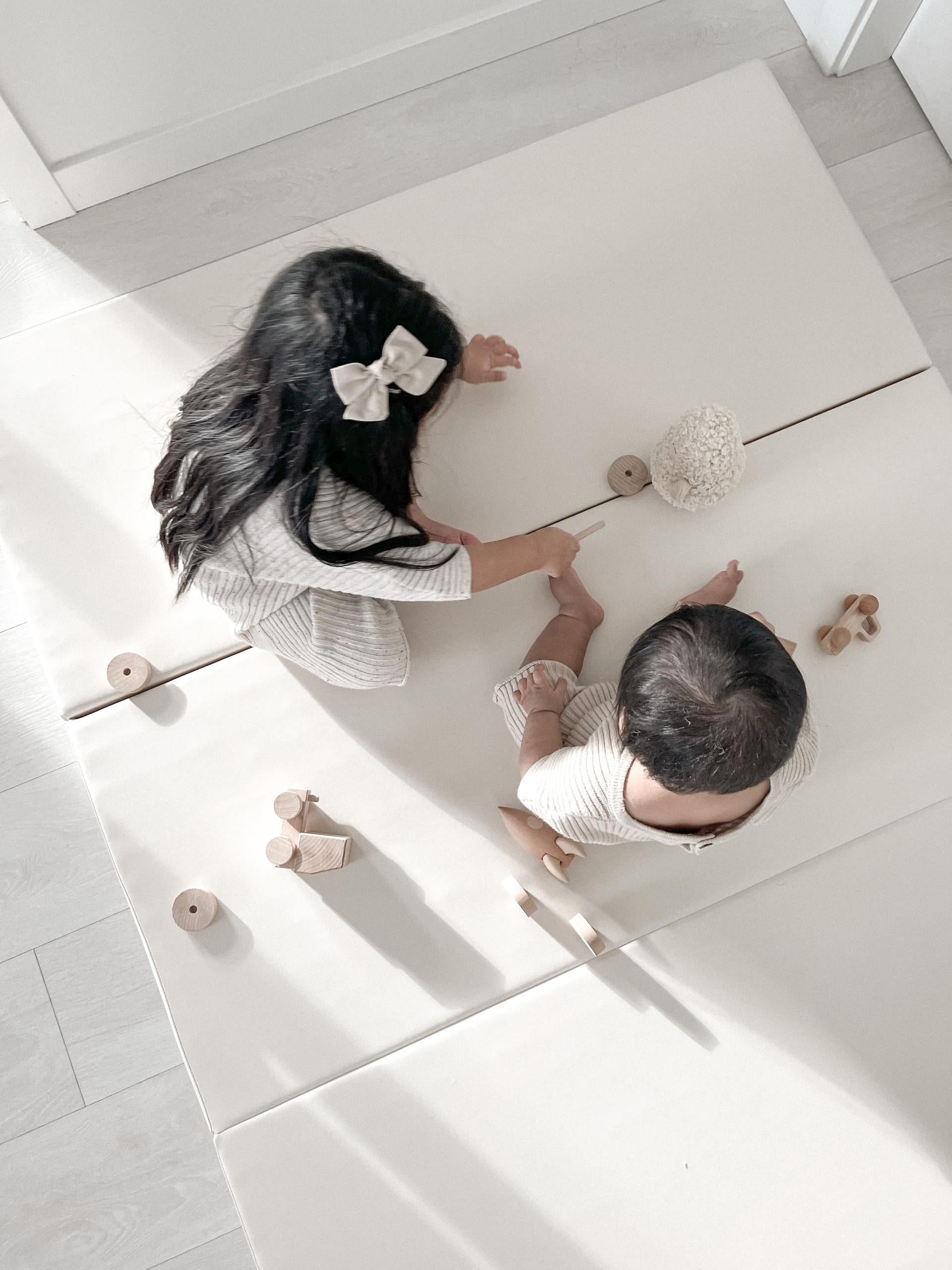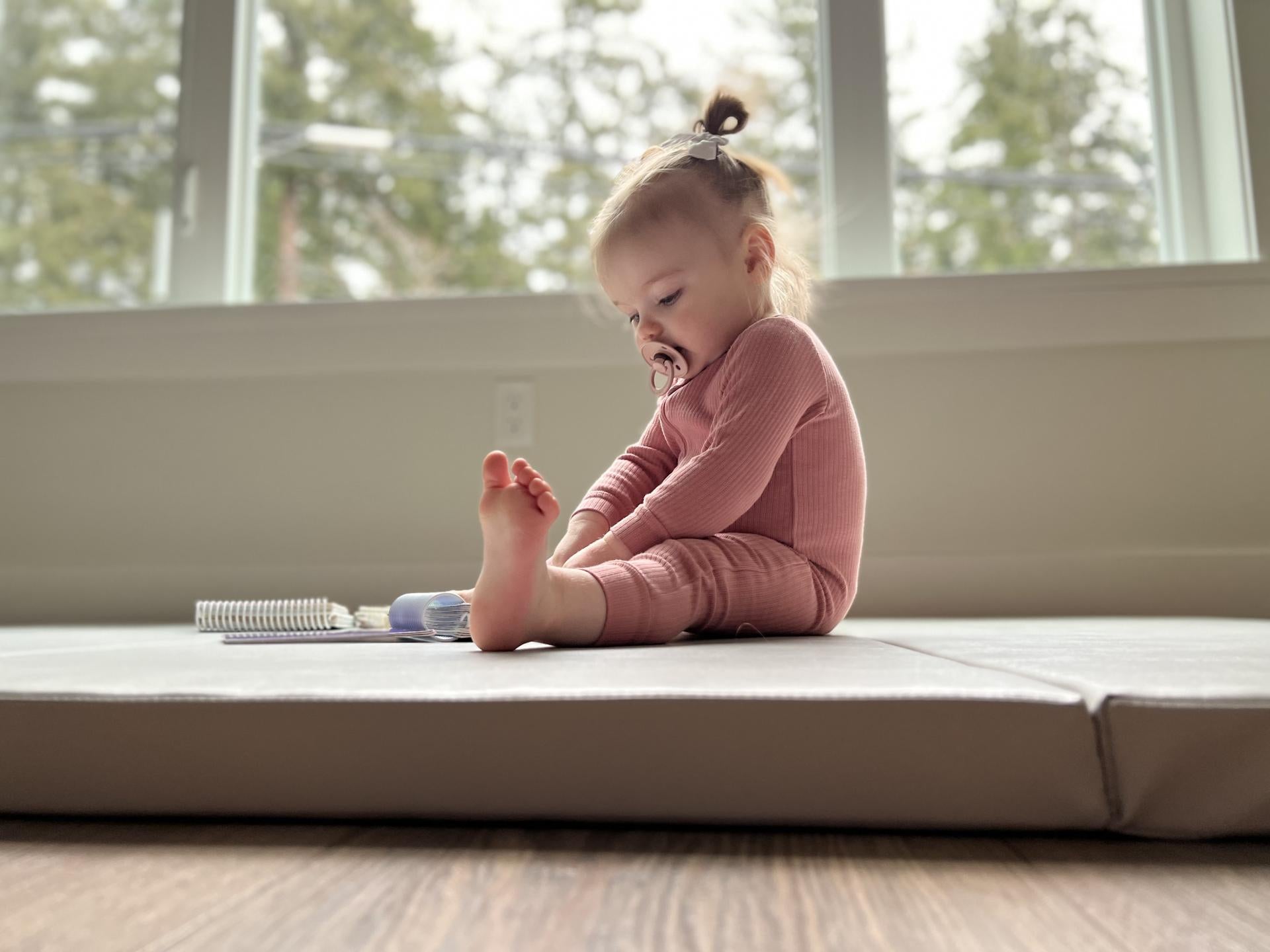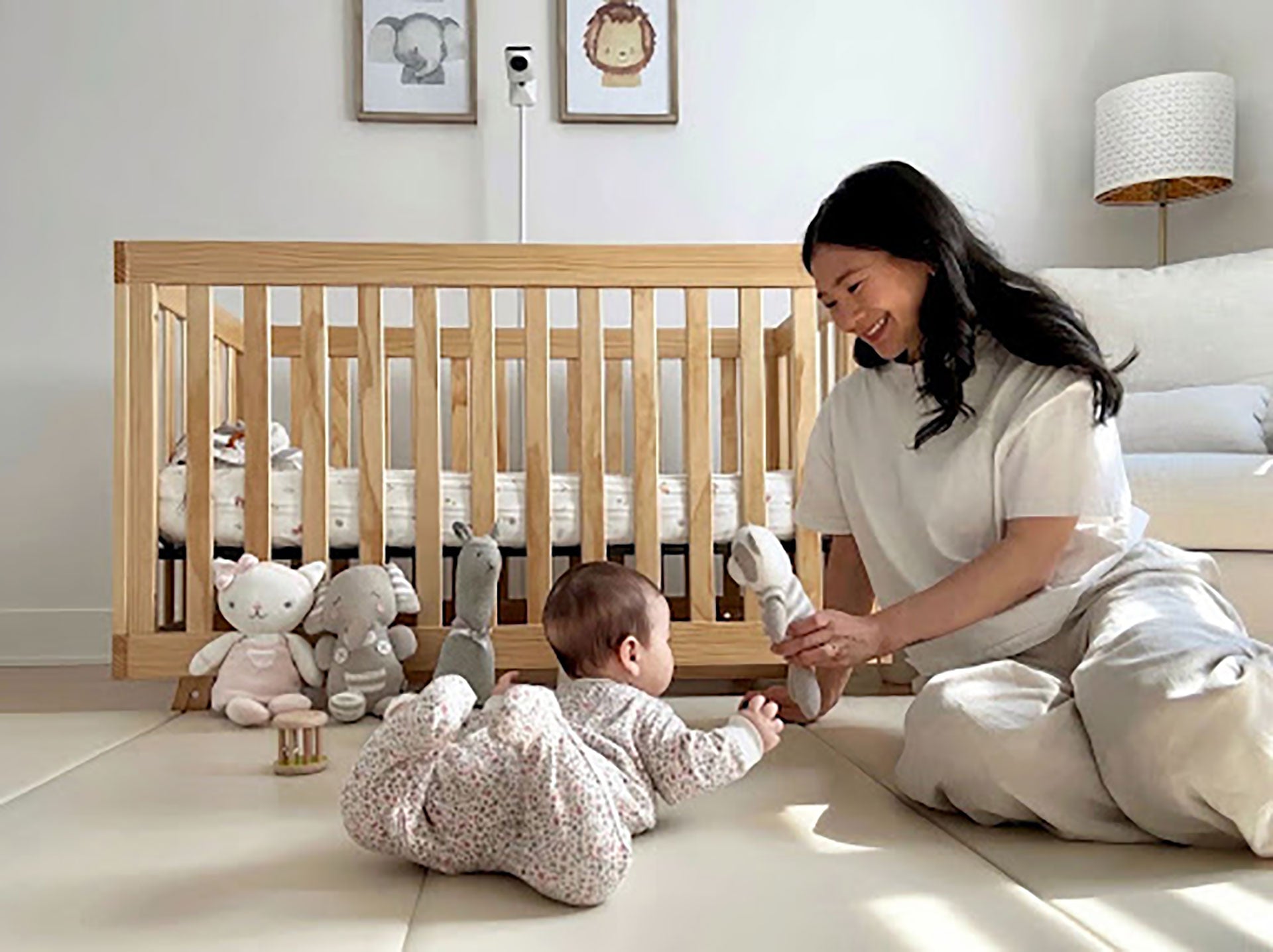
The Baby Sitting Milestone Guide: When Do Babies Start Sitting Up and How to Support Their Development
Sitting up on their own is one of your baby's first big steps toward independence, and it happens faster than you think. If you're asking, “When do babies start sitting up?” you're not alone. This milestone, while exciting and Instagram-worthy, also marks a major leap in your child's motor skill development and physical strength.
At Wunderkids, we understand how important these first-year milestones are. Our Canadian-founded, community-focused brand is here to help you support every stage of early childhood with eco-conscious, ethically made products like our foldable playmats and wooden playpens. Whether your little one is just starting tummy time or gearing up to crawl, we've got the soft, safe space they need to grow confidently, and we've got you covered with guidance, too.
Let's break down the stages of babies sitting, understand how babies learn to sit, and explore how you can encourage sitting safely and naturally.
How Babies Learn to Sit: It All Starts with Core Strength
Sitting may seem simple, but for babies, it's a complex physical achievement. Before your child can sit independently, they need to develop strong neck, back, and core muscles. These are the foundational baby development motor skills that prepare them for balance, coordination, and eventually walking.
The process starts with something as basic (and essential) as tummy time, a key activity that helps babies build muscle strength and awareness of their bodies. It's one reason our plush foam playmats are intentionally designed for everyday floor time. They create a safe and inviting surface where babies can comfortably begin learning how to lift their heads, roll, and eventually sit upright.
Sitting Timeline for Babies: What to Expect Month by Month
Like all aspects of growth, sitting development varies from baby to baby. Still, here's a general sitting timeline for babies that outlines what you can expect in the first year.
0-3 Months: Building Neck Strength
In the newborn stage, your baby is still adjusting to the world. They won't be sitting yet, but they're building strength slowly. Daily tummy time helps develop the neck and shoulder muscles needed for future sitting.
3-4 Months: Early Signs of Control
By now, your baby may start holding their head up during tummy time. This is an exciting preview of what's to come. While they can't sit yet, this growing control is a key signal of readiness.
4-6 Months: Supported Sitting
At this point, many babies can sit with support. With the help of pillows or your hands, your little one may enjoy short sessions in a propped-up position. This is a great time to bring in a secure, foldable playpen where they can stay upright safely and start exploring toys in a seated position.
6-8 Months: Independent Sitting Begins
This is the stage where most babies begin sitting up independently, though it may start with brief, wobbly attempts. According to the CDC's developmental milestone guidelines, babies usually begin sitting without support around 6 months. Expect a few topples as they learn to balance and strengthen their core. This is one of the most exciting baby sitting milestones, and yes, it's camera-worthy.
8-10 Months: Mobility Activation
Once sitting becomes second nature, babies use it as a launchpad to reach for toys, twist around, and transition to crawling. At this stage, a soft playmat with ample floor space allows them to stretch, explore, and move comfortably.
10-12 Months: Getting Ready to Stand
As your baby nears their first birthday, sitting becomes second nature, and they're now preparing to pull up to stand. Using furniture for support, they'll begin testing those little legs. A well-padded, sturdy environment (hello, playpen!) becomes essential for this next phase of growth.
How to Support Sitting Development: From Tummy Time to Independent Balance

Helping your baby sit up isn't about rushing a milestone, it's about supporting their natural rhythm of growth through play, practice, and patience. Developing sitting skills in babies begins long before they achieve perfect posture. It all starts with core strength, head control, and intentional daily movement.
Here's how to support your baby's sitting development with confidence:
Start With Tummy Time
The foundation of all motor milestones begins with tummy time. This essential activity strengthens your baby's neck, shoulders, and core, all of which are required for stable, upright sitting. Place your baby on a plush, non-toxic foam playmat and let them push, wiggle, and lift their head. Incorporate a tummy time mirror to keep things engaging, babies love to see their own reflection, which encourages longer, more interactive sessions.
Aim for several short bursts of tummy time throughout the day and gradually increase the duration as your baby gains strength and interest.
Try Assisted Sitting With the Right Tools
Once your baby shows solid head control, typically around 4 months, you can begin practicing assisted sitting. Sit them upright in your lap or on the floor between your legs, gently supporting their torso. You can also use breastfeeding pillows or infant positioners to offer light, safe support while they explore an upright view of the world.
Many babies begin rolling over before they're ready to sit up, and this important milestone helps strengthen the core muscles and coordination they'll use for sitting. Encouraging plenty of tummy time early on helps build the skills needed for both rolling and sitting.
Some families use specific seats during this phase. While these can help babies experience an upright position, they should only be used once your child has proper neck strength and should never replace floor time. Limit seat use to short, supervised sessions to avoid restricting natural movement and core engagement.
Practice Balance With Reaching and Play
As your baby gains strength, begin to incorporate balance practice into playtime. During supervised floor play on a flat, cushioned surface like the Wunderkids playmat, place toys just out of reach and encourage them to lean, twist, and stretch while sitting. These micro-adjustments help them engage stabilizing muscles, improve posture, and build confidence.
You can also gently roll a ball toward them or encourage interaction with soft stacking rings. This builds coordination and reinforces spatial awareness, an essential part of progressing from assisted sitting to independent sitting.
Encourage Safe, Independent Sitting
Around 6 to 8 months, many babies begin sitting independently for short bursts. Support this phase with a soft, secure space where they can explore without toppling hazards. A foldable wooden playpen offers padded protection, while still allowing room for discovery.
Let them practice sitting without props for increasing intervals, always supervised. Even a brief toppling moment is a learning opportunity, especially when they're landing on a safe surface like our non-toxic playmat.
If your baby is showing signs of discomfort, stiffness, or slower-than-expected progress, don't hesitate to consult a pediatric physical therapist. They can assess your child's needs and recommend customized activities to help your baby reach this baby sitting milestone safely and confidently.
Signs of Readiness for Sitting
Not sure if your little one is ready to sit? Look for these cues:
- They hold their head steady when upright
- They push up with their arms during tummy time
- They show interest in reaching for toys while sitting propped
- They try to roll or scoot toward things they want
When you start noticing these behaviors, it may be time to gradually introduce short, supported sitting sessions.

Safety Considerations When Sitting
While sitting is an exciting phase, it comes with new responsibilities for parents. Keep these safety tips in mind:
- Never leave a baby sitting unattended, even if they seem steady
- Avoid placing them on high surfaces like sofas or beds
- Use padded, non-toxic surfaces like the Wunderkids playmat to reduce impact from topples
- Keep small objects out of reach as their grabbing range increases
- The right environment sets the tone for safe discovery, and reduces stress for parents, too.
Concerns and When to Seek Help
All babies develop at their own pace, but some delays can signal the need for professional input. Contact your pediatrician if:
- Your baby shows no head control by 4 months
- They aren't attempting to sit with support by 6-7 months
- They appear very stiff or very floppy
- They seem uninterested in reaching, rolling, or exploring
- Early intervention can make a big difference, so don't hesitate to bring up any concerns.
What Comes After Sitting? The Road to Mobility
Once your baby masters sitting, the next stages come quickly. Expect your little one to start:
- Scooting across the mat
- Reaching and twisting to grab toys
- Leaning and balancing to shift weight
- Crawling, pulling up, and eventually walking
This stage is all about exploration, which is why Wunderkids designs every product with intentional functionality rooted in real parenting needs. Our lounge-and-play bundles, mats, and playpens are crafted to evolve with your child, and keep up with every adventure.
Make Sitting a Moment to Remember
Whether your baby sits at 5 months or 8 months, the moment they stay upright on their own is one you'll never forget. Celebrate their progress by capturing a milestone photo, sharing with family, or simply watching with awe as they explore the world from a brand-new angle.
And don't forget that behind every milestone, there's a parent helping make it happen. You're doing great.
Why Parents Trust Wunderkids for Every Sitting Stage
At Wunderkids, our goal is to help families thrive at every stage of early childhood. We design products that are as beautiful as they are practical, made for everyday use, safe for every milestone, and built to last.
Here's why parents choose Wunderkids to support sitting development:
- Eco-conscious, non-toxic materials that support your values
- Supportive, soft foam surfaces on all products that make topples worry-free
- Thoughtfully crafted playpens that promote safe exploration
- Canadian-founded brand focused on community and caregiving
From tummy time to sitting up and beyond, we're here to support every step.
Ready to Support Your Baby's Sitting Journey?
Explore our most-loved Playmat and Playpen collections, intentionally designed to support baby development motor skills, toddler sitting prep, and every milestone in between.
Looking for a full setup? Discover our Playmat + Playpen Bundles and give your baby a secure space to grow, play, and sit up with confidence.



